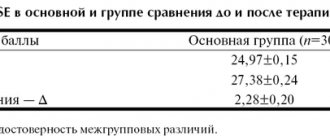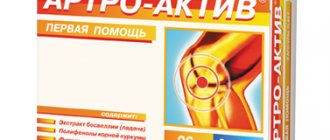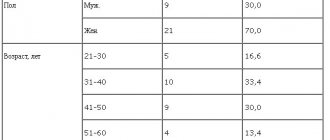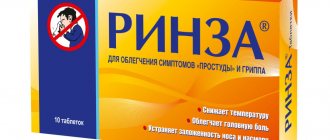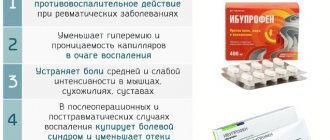Norvasc, 10 mg, tablets, 14 pcs.
Amlodipine can be safely used for the treatment of arterial hypertension together with thiazide diuretics, α-blockers, β-blockers or ACE inhibitors. In patients with stable angina, amlodipine can be combined with other antianginal agents, such as long-acting or short-acting nitrates, beta-blockers.
Unlike other CCBs, a clinically significant interaction with amlodipine (III generation CCB) was not detected when used together with NSAIDs, incl. and with indomethacin.
It is possible to enhance the antianginal and hypotensive effect of CCBs when used together with thiazide and loop diuretics, ACE inhibitors, β-blockers and nitrates, as well as to enhance their hypotensive effect when used together with α1-blockers, antipsychotics.
Although negative inotropic effects have not generally been observed in amlodipine studies, some CCBs may potentiate the negative inotropic effects of antiarrhythmic drugs known to prolong the QT interval (eg, amiodarone and quinidine).
Amlodipine can also be safely used concomitantly with antibiotics and oral hypoglycemic agents.
A single dose of 100 mg of sildenafil in patients with essential hypertension does not affect the pharmacokinetic parameters of amlodipine.
Repeated use of amlodipine at a dose of 10 mg and atorvastatin at a dose of 80 mg is not accompanied by significant changes in the pharmacokinetics of atorvastatin.
Simvastatin:
simultaneous repeated use of amlodipine at a dose of 10 mg and simvastatin at a dose of 80 mg leads to an increase in simvastatin exposure by 77%. In such cases, the dose of simvastatin should be limited to 20 mg.
Ethanol (beverages containing alcohol):
amlodipine with single and repeated use at a dose of 10 mg does not affect the pharmacokinetics of ethanol.
Antivirals (ritonavir):
increases plasma concentrations of BCC, incl. and amlodipine.
Neuroleptics and isoflurane:
enhancing the hypotensive effect of dihydropyridine derivatives.
Calcium preparations
may reduce the effect of CCBs.
When combined with CCBs and lithium preparations
(no data available for amlodipine), their neurotoxicity may increase (nausea, vomiting, diarrhea, ataxia, tremor, tinnitus).
Studies of the simultaneous use of amlodipine and cyclosporine in healthy volunteers and all groups of patients, with the exception of patients after kidney transplantation, have not been conducted. Various studies of the interaction of amlodipine with cyclosporine in patients after kidney transplantation show that the use of this combination may not lead to any effect or increase the Cmin of cyclosporine to varying degrees, up to 40%. These data should be taken into account and cyclosporine concentrations should be monitored in this group of patients when cyclosporine and amlodipine are co-administered.
Does not affect serum digoxin
and its renal clearance.
Does not significantly affect the action of warfarin
(PV).
Cimetidine:
does not affect the pharmacokinetics of amlodipine.
in vitro studies
of digoxin, phenytoin, warfarin and indomethacin
to plasma proteins Grapefruit juice:
A simultaneous single dose of 240 mg of grapefruit juice and 10 mg of amlodipine orally is not accompanied by a significant change in the pharmacokinetics of amlodipine. However, it is not recommended to use grapefruit juice and amlodipine at the same time, because with genetic polymorphism of the CYP3A4 isoenzyme, it is possible to increase the bioavailability of amlodipine and, as a result, increase the hypotensive effect.
Aluminum or magnesium containing antacids:
their single dose does not have a significant effect on the pharmacokinetics of amlodipine.
CYP3A4 isoenzyme inhibitors:
with simultaneous use of diltiazem at a dose of 180 mg and amlodipine at a dose of 5 mg in elderly patients (69 to 87 years old) with arterial hypertension, an increase in systemic exposure of amlodipine by 57% was observed. Concomitant use of amlodipine and erythromycin in healthy volunteers (18 to 43 years of age) does not lead to significant changes in amlodipine exposure (22% increase in AUC). Although the clinical significance of these effects is unclear, they may be more pronounced in older patients.
Potent inhibitors of the CYP3A4 isoenzyme (for example, ketoconazole, itraconazole) may increase the plasma concentration of amlodipine to a greater extent than diltiazem. Amlodipine and inhibitors of the CYP3A4 isoenzyme should be used with caution.
Clarithromycin:
CYP3A4 isoenzyme inhibitor. Patients taking clarithromycin and amlodipine at the same time have an increased risk of decreased blood pressure. Patients taking this combination are advised to be under close medical supervision.
Inducers of the CYP3A4 isoenzyme:
There is no data on the effect of inducers of the CYP3A4 isoenzyme on the pharmacokinetics of amlodipine. Blood pressure should be carefully monitored while using amlodipine and inducers of the CYP3A4 isoenzyme.
Tacrolimus:
When used simultaneously with amlodipine, there is a risk of increasing the concentration of tacrolimus in the blood plasma. To avoid toxicity of tacrolimus when used concomitantly with amlodipine, the concentration of tacrolimus in the blood plasma of patients should be monitored and the dose of tacrolimus should be adjusted if necessary.
Pharmacological properties of the drug Norvasc
Amlodipine (3-ethyl-5-methyl-2-(2-amino-ethoxymethyl)-4-(2-chlorophenyl)-1,4-dihydro-6-methyl-3,5-pyridinedicarboxylate benzenesulfonate) is a calcium ion antagonist ( blocker of slow calcium channels of cell membranes). Blocks the entry of calcium ions into the smooth muscle cells of the myocardium and blood vessels. The mechanism of the hypotensive effect of amlodipine is due to a direct effect on vascular smooth muscle. The antianginal effect of amlodipine is realized in two ways:
- amlodipine dilates peripheral arterioles and thus reduces afterload. Since heart rate remains virtually unchanged, a decrease in afterload on the heart leads to a decrease in energy consumption and myocardial oxygen demand;
- amlodipine directly dilates coronary arteries of different calibers both in unchanged and ischemic areas of the myocardium. This dilation increases the supply of oxygen to ischemic areas in patients with vasospastic angina (Prinzmetal's angina or variant angina) and prevents the development of coronary vasoconstriction.
In patients with hypertension (arterial hypertension), a single dose of amlodipine provides a clinically significant reduction in blood pressure within 24 hours both in the supine and standing positions. Due to the gradual onset of action, amplodipine does not cause the development of symptomatic hypotension. In patients with angina pectoris, a single dose of amlodipine increases the time of physical activity, delays the development of an attack of angina and ST during physical activity, reduces the frequency of angina attacks and reduces the need to take nitroglycerin. in vitro studies indicate that approximately 97.5% of amlodipine is bound to plasma proteins. Amlodipine does not have a negative effect on metabolism and the lipid spectrum of blood plasma; it can be used to treat patients with asthma, diabetes mellitus and gout. As a result of hemodynamic studies and controlled clinical trials in patients with heart failure II–III functional class (FC) according to the NYHA classification, it was revealed that amlodipine does not cause a deterioration in the condition of patients according to such criteria as exercise tolerance, left ventricular ejection fraction and clinical symptoms. In placebo-controlled studies evaluating patients with heart failure (NYHA class III-IV) treated with digoxin, diuretics and ACE inhibitors, it was found that amlodipine did not increase the mortality rate or composite mortality rate in patients with heart failure . After oral administration, amlodipine is well absorbed from the digestive tract, reaching maximum plasma concentrations after 6–12 hours. Bioavailability is 64–80%. The volume of distribution is approximately 21 l/kg. Food intake does not affect the absorption of amlodipine. The half-life is approximately 35–50 hours, which allows the drug to be administered once a day. A stable equilibrium concentration in the blood plasma is achieved after 7–8 days of continuous use of the drug. Amlodipine is biotransformed in the liver with the formation of inactive metabolites; 10% of the unchanged drug and 60% of the metabolites are excreted in the urine. In the elderly and in patients with congestive heart failure, there is a tendency for the clearance of amlodipine to decrease, which leads to an increase in AUC and half-life.
Indications for use of the drug Norvasc
Treatment of hypertension (arterial hypertension) (as a first-line drug as monotherapy or combination therapy in combination with thiazide diuretics, α- and β-adrenergic receptor blockers, ACE inhibitors). Treatment of coronary artery disease, namely stable angina and vasospastic angina (variant angina or Prinzmetal angina). Reducing the risk of the need for myocardial revascularization and hospitalization for angina pectoris in patients with coronary artery disease. The drug can be used in cases where the clinical picture suggests the presence of vasospasm or vasoconstriction, although their presence has not been confirmed. Used as monotherapy or in combination with other antianginal drugs.
Norvasc drug overdose, symptoms and treatment
Experience in treating Norvasc overdose in humans is limited. In some cases, gastric lavage is advisable. Existing data suggest that significant overdose may lead to excessive peripheral vasodilation with a subsequent marked and possibly prolonged decrease in blood pressure. Clinically significant arterial hypotension caused by an overdose of Norvasc requires active measures aimed at maintaining the function of the cardiovascular system, including monitoring of heart and lung parameters, elevated position of the lower extremities, control of circulating blood volume and diuresis. To restore vascular tone and normalize blood pressure, vasoconstrictor drugs can be used if there are no contraindications to their use. In order to eliminate the consequences of calcium channel blockade, intravenous administration of calcium gluconate solution is indicated. Since amlodipine is highly bound to plasma proteins, dialysis is ineffective.
Special instructions for the use of Norvasc
The half-life of Norvasc increases in patients with impaired liver function, however, recommendations regarding the dosage regimen of the drug in this group of patients have not been developed, for this reason the drug should be used in them with caution. The recommended dose for patients with liver failure is 2.5 mg. In patients with renal failure, Norvasc is used in normal doses. Changes in plasma concentrations of amlodipine do not correlate with the severity of renal failure. Amlodipine is not eliminated by dialysis. Elderly patients tolerate the drug well; The recommended dose for them is 2.5 mg/day. The safety of using Norvasc during pregnancy and lactation has not been established. The drug can be used during pregnancy only if there is no safer alternative, and the risk caused by the disease itself outweighs the possible negative consequences of using the drug for the mother and fetus. The effectiveness and safety of Norvasc in children has not been studied. It is unlikely that Norvasc can have a negative effect on the ability to drive vehicles or operate potentially dangerous machinery.
Side effects of the drug Norvasc
In placebo-controlled clinical trials involving patients with hypertension (arterial hypertension) and angina pectoris, the most commonly reported symptoms were headache, peripheral edema, fatigue, drowsiness, nausea, abdominal pain, flushing, palpitations and dizziness. In these clinical studies, no clinically significant changes in laboratory parameters due to Norvasc were noted. Significantly less often, with the widespread use of Norvasc, side effects such as alopecia, constipation, arthralgia, asthenia, back pain, dyspepsia, shortness of breath, gum hyperplasia, gynecomastia, hyperglycemia, impotence, increased frequency of urination, leukopenia, general malaise, mood changes, sensation were observed. dry mouth, convulsions, myalgia, peripheral neuropathy, pancreatitis, sweating, fainting, thrombocytopenia, vasculitis. In most cases, the causal relationship was unreliable. Allergic reactions have been reported rarely, including pruritus, rash, angioedema and erythema multiforme. Very rarely, when using the drug, hepatitis, jaundice and increased activity of liver enzymes (usually due to cholestasis) were observed. In most of these cases, the causal relationship was not reliable. As with the use of other calcium ion antagonists, isolated cases of myocardial infarction, arrhythmias (including ventricular tachycardia and atrial fibrillation), as well as chest pain have been described with the use of Norvasc.
